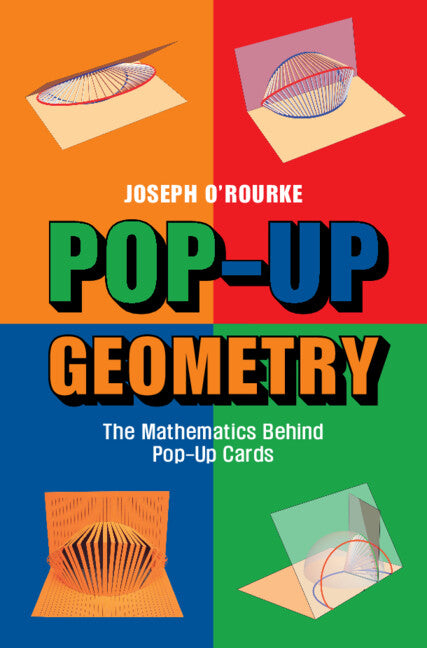Freshly Printed - allow 8 days lead
Couldn't load pickup availability
Pop-Up Geometry
The Mathematics Behind Pop-Up Cards
Explores the beautifully intricate dynamics of pop-up cards using high school mathematics, making tangible what is often dry and abstract.
Joseph O'Rourke (Author)
9781009098403, Cambridge University Press
Hardback, published 24 March 2022
175 pages
23.5 x 15.6 x 1.1 cm, 0.34 kg
'Complete with vibrantly colored graphics, companion animations that depict the motion described in the book, and templates for the reader to make the pop-up creations the book is analyzing, this book makes it easy for the reader to engage with the material they are learning.' Katelynn Kochalski, Notices of the American Mathematical Society
Anyone browsing at the stationery store will see an incredible array of pop-up cards available for any occasion. The workings of pop-up cards and pop-up books can be remarkably intricate. Behind such designs lies beautiful geometry involving the intersection of circles, cones, and spheres, the movements of linkages, and other constructions. The geometry can be modelled by algebraic equations, whose solutions explain the dynamics. For example, several pop-up motions rely on the intersection of three spheres, a computation made every second for GPS location. Connecting the motions of the card structures with the algebra and geometry reveals abstract mathematics performing tangible calculations. Beginning with the nephroid in the 19th-century, the mathematics of pop-up design is now at the frontiers of rigid origami and algorithmic computational complexity. All topics are accessible to those familiar with high-school mathematics; no calculus required. Explanations are supplemented by 140+ figures and 20 animations.
Preface
1. Parallel Folds
2. V-Folds and Rotary Motion
3. The Knight's Visor
4. Pop-up Spinner
5. Polyhedra: Rigid Origami and Flattening
6. Algorithms for Pop-Up Design
7. Pop-Up Design is Hard
8. Solutions to Exercises.
Subject Areas: Origami & paper engineering [WFTM], Mathematical theory of computation [UYA], Algorithms & data structures [UMB], Geometry [PBM]


